Eurozone Q4 GDP growth was finalized at 0.2% qoq, unrevised. Annually, GDP grew 1.1% yoy. Over the whole 2018, GDP grew 1.8%. During Q4, household final consumption expenditure rose by 0.2%. Gross fixed capital formation increased by 0.6%. Exports increased by 0.9%. Imports increased by 0.5%. Eurozone Employment growth in Q4 was finalized at 0.3% qoq, 1.3% yoy.
UK Hammond: Rejecting the Brexit deal means more uncertainty for Britain and its people
UK Chancellor of Exchequer Philip Hammond warned today “if we don’t pass the meaningful vote on Tuesday we’ll go into a parliamentary process that very likely will lead to an extension of time and an uncertain outcome, more uncertainty for the British economy, more uncertainty for people across the country”.
And he urged “it’s very important that my colleagues think about the consequences of not agreeing this deal. This is now the last chance to be confident that we can get this deal done and we can leave the EU on schedule.”
The UK parliament is scheduled to have another Brexit deal meaningful vote on March 12. If it’s rejected, there will be a vote on no-deal Brexit on March 13. Then if both are rejected, there will be a vote on Article 50 extension.
China: Some region will face relatively big budgetary pressure this year
China plans to cut around CNY 2T in taxes and fees for companies in 2019 as growth could slow to the lowest pace in three decades at 6.0-6.5%. Yet, its Finance Minister Liu Kun warned that “considering the downward pressure on the economy and the upcoming policy of larger tax and fee cuts, some regions will still face relatively big budgetary pressure this year.”
Budget deficit is targeted to be at 2.8% of GDP, up from 2.6% in 2018. Liu said “the arrangement on the budget deficit ratio has fully considered factors including fiscal revenue and local government special bonds and leaves more policy room for future macro adjustments.” To offset the reduction in tax and fee revenue, Liu noted the government will collect more profits from some state-owned financial institutions and companies. The government is also trying to secure funding via other channels “which allows us not to raise the deficit ratio too high.”
ECB Previews: Growth and inflation projection downgrade expected, maybe forward guidance too
ECB rate decision and press conference will be the major focus today. No change in monetary policy is expected. The key interest rate should be held at 0.00%, with marginal lending facility rate at 0.25% and deposit facility rate at -0.40% respectively.
Since Q4 last year, economic outlook in Eurozone deteriorated and data released since January revealed little improvements. OECD downgraded Eurozone growth forecasts sharply lower from 1.8% in 2019 to just 1.0%. Most notably, Germany growth forecast was downgraded from 1.6% to just 0.7% in 2019. Italy is projected to contract -0.2% in 2019, revised down from 0.9% growth. There is a large chance for ECB to revised down both growth and inflation forecasts in the new staff projections to be published today.
On forward guidance, ECB adopted the stance that interest rates will remain at present level “at least through the summer of 2019”. There is a chance for ECB to extend the duration to at least “through the end of 2019” without losing flexibility nor precision. It’s good timing to do so with new economic projections. On new TLTROs, comments from ECB officials appear to suggests that they’re still in discussion. thus, it’s unlikely to have any formal announcement today.
More previews on ECB:
Australia recorded second largest trade surplus in Jan, but retail sales missed
Australia trade surplus widened to AUD 4.55B in January, up from AUD 3.77B and beat expectation of AUD 2.90B. That’s also the second largest surplus on record. Exports rose 5% to AUD 1.90B while imports rose 3% to AUD 1.12B.
However, retail sales was disappointing. Sales grew merely 0.1% mom in January, rebounding from -0.4% decline in prior month, but missed expectation of 0.3% mom.
Also from Australia, AiG Performance of Construction index rose 0.7 to 43.8 in February, indicating a slower rate of contraction.
Fed Beige Book: Government shutdown led to slower economic activity
In the Beige Book economic report, Fed noted that “economic activity continued to expand in late January and February”. 10 out of 12 districts reported “slight-to-moderate” growth, except Philadelphia and St. Louis, which were flat.
About half of districts said “government shutdown had led to slower economic activity in some sectors”, including retail, auto sales, tourism, real estate, restaurants, manufacturing, and staffing services.” Numerous manufacturing contacts expressed concerns on ” weakening global demand, higher costs due to tariffs, and ongoing trade policy uncertainty”.
Employment increased in most districts, with “modest-to-moderate” gains in a majority. Wages continued to increased, with a majority reported “moderately higher wages”. Price continued to increased at a “modest-to-moderate pace”. A few districts reported “upward price pressures from tariffs”. But several districts noted that steel prices had “stabilized or fallen recently”.
EU officials pessimistic on Brexit breakthrough this week
It’s less than a week from March 12 when another meaningful vote on Brexit deal could be held in the UK Parliament. But Bloomberg reported that positions on both sides are hardening rather than converging. Both the UK and EU are counting on the other to back down. EU officials are pessimistic about the chance of any breakthrough this week.
In particular, unnamed EU officials described the talks with UK Attorney General Geoffrey Cox earlier this week as some of the worst-tempered of the two-year process. Meanwhile, what Cox requested, independent arbitration of the contentious Irish backstop arrangement outside of European Court of Justice, was seen as unacceptable for the EU.
US-China trade talks going well, getting words down on contract
Ted McKinney, Undersecretary for Trade and Foreign Agriculture Services, said US-China trade talks are going well. And, “presently there’s a lot of discussions going on by digital video conference, also a very good and productive thing”. Meanwhile, there’s just a lot of work in getting words down … a contract or agreement, and that’s the current status”.
Trump said in the Oval Office that trade negotiations with China are “moving along well”, “very nicely”. But he added that “there would either be “a good deal or it’s not going to be a deal”.
Canadian Dollar dives as BoC turns cautious and put rate hike off the table, at least temporarily
Canadian Dollar dives sharply after BoC kept interest rate unchanged at 1.75% and turned more cautious. A rate hike should be at least off the table temporarily.
The most important change in the statement is in the last paragraph. BoC now said the outlook “continues to warrant a policy interest that is below its neutral range”. And, given the mixed data, “it will take time to gauge the persistence of below-potential growth and the implications for the inflation outlook”. Also, with “increased uncertainty” about timing of future hikes, BoC will closely watch developments in household spending, oil and trade.
Also from Canada, Ivey PMI dropped sharply to 50.6 in February, down from 54.7 and way below expectation of 55.1. Trade deficit widened to CAD -4.6B in December versus expectation of CAD -1.7B. Labor productivity dropped -0.4% qoq in Q4.
Here is the full statement:
Bank of Canada maintains overnight rate target at 1 ¾ per cent
The Bank of Canada today maintained its target for the overnight rate at 1 ¾ per cent. The Bank Rate is correspondingly 2 per cent and the deposit rate is 1 ½ per cent.
Recent data suggest that the slowdown in the global economy has been more pronounced and widespread than the Bank had forecast in its January Monetary Policy Report (MPR). While the sources of moderation appear to be multiple, trade tensions and uncertainty are weighing heavily on confidence and economic activity. It is difficult to disentangle these confidence effects from other adverse factors, but it is clear that global economic prospects would be buoyed by the resolution of trade conflicts.
Many central banks have acknowledged the building headwinds to growth, and financial conditions have eased as a result. Meanwhile, progress in US-China trade talks and policy stimulus in China have improved market sentiment and contributed to firmer commodity prices.
For Canada, the Bank was projecting a temporary slowdown in late 2018 and early 2019, mainly because of last year’s drop in oil prices. The Bank had forecast weak exports and investment in the energy sector and a decline in household spending in oil-producing provinces. However, the slowdown in the fourth quarter was sharper and more broadly based. Consumer spending and the housing market were soft, despite strong growth in employment and labour income. Both exports and business investment also fell short of expectations. After growing at a pace of 1.8 per cent in 2018, it now appears that the economy will be weaker in the first half of 2019 than the Bank projected in January.
Core inflation measures remain close to 2 per cent. CPI inflation eased to 1.4 per cent in January, largely because of lower gasoline prices. The Bank expects CPI inflation to be slightly below the 2 per cent target through most of 2019, reflecting the impact of temporary factors, including the drag from lower energy prices and a wider output gap.
Governing Council judges that the outlook continues to warrant a policy interest rate that is below its neutral range. Given the mixed picture that the data present, it will take time to gauge the persistence of below-potential growth and the implications for the inflation outlook. With increased uncertainty about the timing of future rate increases, Governing Council will be watching closely developments in household spending, oil markets, and global trade policy.
Information note
The next scheduled date for announcing the overnight rate target is April 24, 2019. The next full update of the Bank’s outlook for the economy and inflation, including risks to the projection, will be published in the MPR at the same time.
Into US session: AUD weakest, CAD follows as BoC awaited
The financial markets are rather quiet in European session. Chinese stocks extended recent strong rally with Shanghai SSE regained 3100 handle. But optimism was not much shared by investors elsewhere. Both Asian and European markets are mixed in general.
In the currency markets, Australian Dollar remains the weakest one for today as traders increased bet on RBA rate cut this year after dismal Q4 GDP. Sterling is the second weakest as there is no breakthrough on Irish backstop while next week’s crucial Brexit votes are approaching. Yen and Dollar are the strongest ones for today. OECD’s downgrade of global growth forecast is largely ignored.
Over the week, the picture is similar, with Yen and Dollar beings strongest. Aussie is the weakest one. Canadian Dollar follows as traders now await BoC rate decision. Recent economic data from Canada pointed to slowdown in growth momentum. Yet BoC Governor Stephen Poloz maintained tightening bias in recent comments. There is risk of a mild dovish twist in today’s BoC statement. If that happens, the Loonie will likely suffer another round of selling. Also WTI crude oil stabilizes at around 56 for the moment but looks vulnerable.
Also to be released include Canada trade balance, labor productivity and Ivey PMI. US will release ADP employment, trade balance, crude oil inventories and Fed’s Beige Book.
In Europe, currently:
- FTSE is up 0.32%.
- DAX is down -0.25%.
- CAC is down -0.15%.
- German 10-year yield is down -0.024 at 0.146.
Earlier in Asia:
- Nikkei dropped -0.60%.
- Hong Kong HSI rose 0.26%.
- China Shanghai SSE rose 1.57%.
- Singapore Strait Times dropped -0.35%.
- Japan 10-year JGB yield dropped -0.0132 to -0.005, turned negative.
OECD lowers global growth forecast to 3.3% in 2019 on China and Europe slowdown
OECD lowered global growth forecast by -0.2% to 3.3% in 2019 and by -0.1% to 3.4% in 2020. G20 growth forecast was lowered by -0.2% to 3.5% in 2019, and kept unchanged at 3.7% in 2020.
In the Interim Economic Outlook, it’s noted that Chinese and European slowdown, and weakening global trade growth are the principal factors weighing on the world economy. Also, OECD warned that further trade restrictions and policy uncertainty could bring “additional adverse effects”. For China, while policy stimulus should offset weak trade development, “risks remains of a sharper slowdown” that would hit global growth and trade.
“The global economy is facing increasingly serious headwinds,” said OECD Chief Economist Laurence Boone. “A sharper slowdown in any of the major regions could derail activity worldwide, especially if it spills over to financial markets. Governments should intensify multilateral dialogue to limit risks and coordinate policy actions to avoid a further downturn,” Ms Boone said.
Here are some details:
- World growth forecast is lowered from 3.5% to 3.3% in 2019.
- World growth forecast is lowed from 3.5% to 3.4% in 2020.
- G20 growth forecast is lowered from 3.7% to 3.5% in 2019.
- G20 growth forecast is unchanged at 3.7% in 2020.
- US growth forecast is lowered from 2.7% to 3.6% in 2019.
- US growth forecast is raised from 2.1% to 2.2% in 2020.
- Eurozone growth forecast is lowered from 1.8% to 1.0% in 2019.
- Eurozone growth forecast is lowered from 1.6% to 1.2% in 2020.
- UK growth forecast is lowered from 1.4% to 0.8% in 2019.
- UK growth forecast is lowered from 1.1% to 0.9% in 2020.
- Japan growth forecast is lowered from 1.0% to 0.8% in 2019.
- Japan growth forecast is unchanged at 0.7% in 2020.
- China growth forecast is lowered from 6.3% to 6.2% in 2019.
- China growth forecast is unchanged at 6.0% in 2020.
Lastest OECD forecasts:
November OECD forecasts:
No solution on Irish backstop after difficult discussion with robust, strong views
UK Attorney General Geoffrey Cox talked about his meeting with EU in Brussels yesterday. He told Sky News that “we’ve put forward some proposals, they’re very reasonable proposals, and we’re now really into the detail of the discussions,” regarding the changes needed on Irish backstop. Cox added that “both sides have exchanged robust, strong views and we’re now facing the real discussions, talks will be resuming soon.”
European Commission spokesman Margaritis Schinas said chief Brexit negotiator Michel Barnier has informed the Commission that “while the talks take place in a constructive atmosphere, discussions have been difficult.” Also, “no solution has been identified at this point that is consistent with the Withdrawal Agreement, including the protocol on Ireland and Northern Ireland, which will not be reopened,”
Separately, UK Trade Minister Liam Fox said the government will laid out the tariffs it plans to levy if the parliament chooses a no-deal Brexit. Fox personally prefer to present the tariff plan to MPs before no-deal vote next week. But he said it was not his decision to make.
Position trading: Switched from AUD/JPY short to AUD/USD short
Here is an update on our position trading strategy last updated in the weekly report. To recap, we maintained our bearish view on Aussie, but we’re not convinced regarding Yen’s strength. Therefore, we decided to switch from AUD/JPY short to AUD/USD this week. The AUD/JPY short (entered at 78.40) was closed at 79.50 at weekly open, with 110 pips loss.
AUD/USD’s is entered today on break of 0.7050. Today’s break of 0.7054 support should confirm completion of rebound from 0.6722 at 0.7295.
AUD/USD is staying inside medium term falling channel and failed to sustain above falling 55 day EMA. Both affirmed our bearish view. Further decline should be seen back to retest 0.6722 low in near term.
In the larger picture, the corrective rise from 0.6826 (2016 low) completed at 0.8135 after rejection by 55 month EMA. The dive to 0.6722 was a result of the currency flash crash earlier this year. Thus, AUD/USD couldn’t sustain below 0.6826 low at that time. But we’d anticipate a firm break of 0.6722/6826 zone with the current fall to resume the long term down trend from 1.1079 to 0.6008 and below.
To conclude, we’ll hold short in AUD/USD, with stop at 0.7125 first to give it some breathing room. 0.6722 is the first target and we’ll assess the reaction from this level to decide whether to exit. But we’re tentatively looking at 0.6008 as the point to close the trade.
Into European session: Aussie weakest after GDP miss. Dollar, Yen and Swiss firm
Entering into European session, Australian Dollar is the weakest one for today, followed by New Zealand Dollar. The Aussie is weighed down by much weaker than expected Q4 GDP growth, at 0.2% qoq. Australian Treasurer Josh Frydenberg attributed the slowdown to drought. RBA Governor Philip Lowe also maintained upbeat view on the outlook. But today’s data further affirm market expectations that the next move is a cut, and could happen as soon as in August.
Sterling is the third weakest as there was no UK Attorney General Geoffrey Cox’s trip to Brussels produced no breakthrough on Irish backstop. Yen, Dollar and Swiss are the strongest ones. Looking ahead, the European session is relatively empty today. BoE Cunliffe’s speech may catch some attention. Focus will mainly be on BoC rate decision and US ADP employment.
In Asia:
- Nikkei closed down -0.60%.
- Hong Kong HSI is up 0.19%.
- China Shanghai SSE is up 0.33%.
- Singapore Strait Times is up 0.01%.
- Japan 10-year JGB yield is down -0.0134 at -0.005, turned negative again.
Overnight:
- DOW dropped -0.05%.
- S&P 500 dropped -0.11%.
- NASDAQ dropped -0.02%.
- 10-year yield closed flat at 2.722.
BoJ Harada: Should strengthen monetary easing without delay if economy deteriorates
BoJ board member Yutaka Harada warned that the economy is facing increasing risks, including slowdown in China, trade tensions and weak private consumptions. Also, subdued inflation could reinforce the public view of low inflation, which would delay the achievement of the 2% target. He urged that “if the economy deteriorates to the extent that achieving the inflation target in the long term becomes difficult, it’s necessary to strengthen monetary easing without delay.”
For now, Harada said BOJ should commit to loose monetary policy “unless prices show stronger movements than currently anticipated.” And the conduct of monetary policy should be “data-dependent, not calendar-based”. He also warned that “past episodes of premature monetary tightening worsened the economy, driven down prices and output, and led to declines in interest rates in the longer-term.”
RBA Lowe: Income growth to provide counterweight to falling house price
RBA Governor Philip Lowe said in a speech that nationwide housing prices have fallen by 9% since peaking in 2017, bringing them back to level in mid-2016. He noted that “declines of this magnitude are unusual, but they are no unprecedented”. Movement in house prices would influence consumer spending, building activity, access to finance by small businesses and profitability of financial institutions.
Though, labor market is expected to continue to tighten with gradual increase in wage growth and faster income growth. That should “provide a counterweight to the effect on spending of lower housing prices.” And overall, Lowe said the adjustment in our housing market is manageable for the overall economy. It is unlikely to derail our economic expansion. It will also have some positive side-effects by making housing more affordable for many people.”
On monetary policy, Lowe also noted that a “strong labour market is the central ingredient in the expected pick-up in inflation”. Wag growth would “boost household income and spending and provide a counterweight to the fall in housing price”. And, “a lot depends upon the labour market”. RBA will “continue to assess the shifts in the global economy, trends in household spending and how the tension between the labour market and output indicators resolves itself. ”
Lowe also reiterated that the probabilities for the next move to go up or down are “reasonably evenly balanced”.
Lowe speech “The Housing Market and the Economy“.
Australia GDP slowed to 0.2% in Q4, RBA may need to revise down forecasts in May
Australia GDP grew only 0.2% qoq in Q4, slowed from prior quarter’s 0.3% qoq and missed expectation of 0.5% qoq. Annual growth slowed to 2.3%, down from Q3’s 2.7%. Looking at some details, terms of trade rose 3.2% qoq, 6.1% yoy. But consumer spending rose only 0.4% qoq, 2.0% yoy. Home building contracted -3.4% qoq, slowed to 2.5% yoy. Farm output dropped -4.0% qoq, -5.8% yoy. Full release here.
Australian Treasurer Josh Frydenberg tried to talk down the slowdown. He noted that “the moderation in part reflects the impact of the drought, lower mining investment and as we continue to move from the construction to the production phase, as well as a decline in residential construction activity from record levels”.
However, the country “continues to grow faster than any G7 nation except for the United States”. And, 0.2% growth was “within the range of market expectations” to him. Also, “over the past 12 months, more than 270,000 new jobs were created and more than 8 out of every 10 of these jobs were full-time.”
Westpac noted that the data now posts a “challenge” for RBA to “credibly maintain its GDP growth forecasts at 3% in 2019 and 2.75% in 2020”. Thus RBA is likely to revise down its growth forecasts in May SoMP. And the policy stance could then shift to steady with a clear easing bias. Westpac continued to expect RBA to cut twice this year in August and November.
Dollar extends rally after strong services and housing data
Dollar’s rally seems to be finally picking up momentum after stronger than expected ISM services and new home sales. EUR/USD breaks 1.1316 minor support and should be heading back to 1.1215 low. USD/CHF also breaks 1.0024 and should be targeting 1.0098 resistance. USD/CAD also breaks 1.3340 resistance earlier today which indicates near term bullish reversal. Attention will be on 0.7054 support in AUD/USD to align dollar bullish outlook. At this point, Yen is the second strongest, followed by Aussie. New Zealand Dollar is weakest, followed by Sterling.
Fed Kashkari: Focus on wages as best indicator on labor market tightness
Minneapolis Fed President Neel Kashkari reiterated his view that the US is not full employment yet and there is room for growth. He said “here is still slack in the labor market, and until we see wages growth really pick up I’m going to believe that there are still more Americans out there”.
Thus, “I’m very focused on wages as the best indicator overall of how tight is the labor force.”




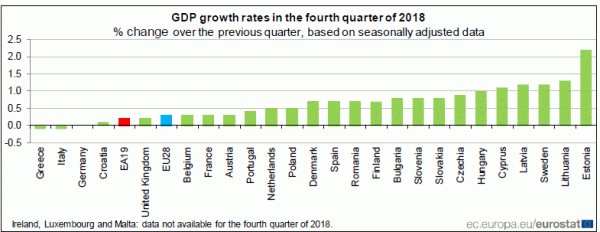
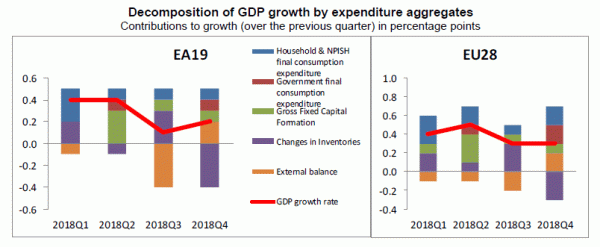
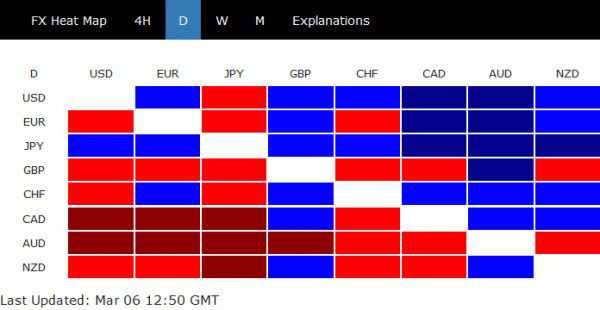
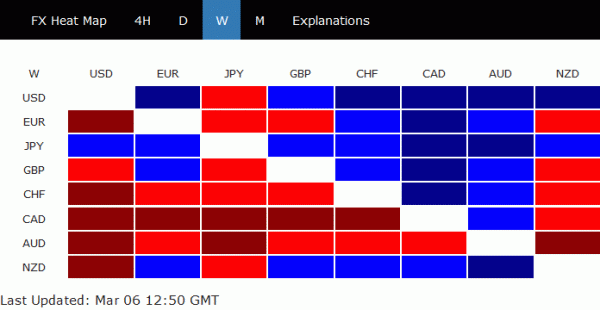
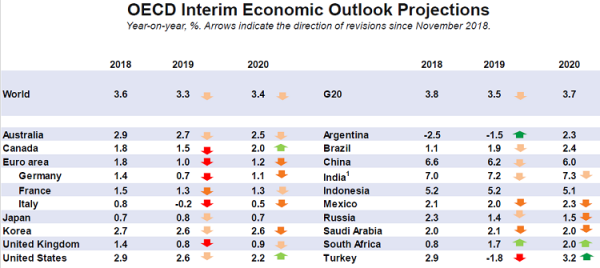
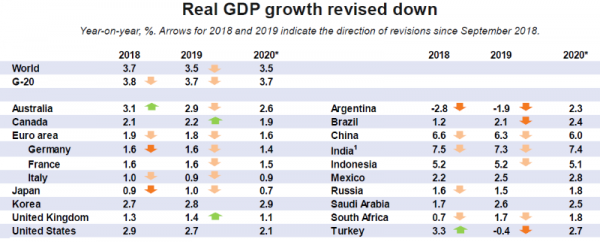
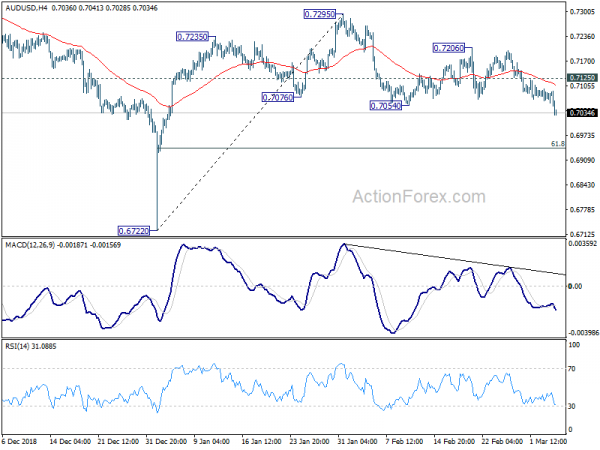

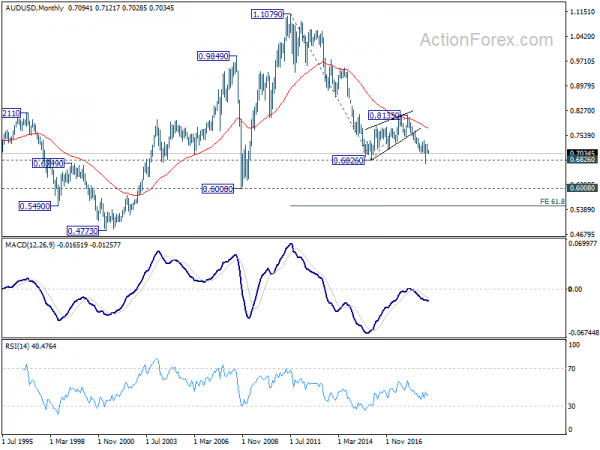
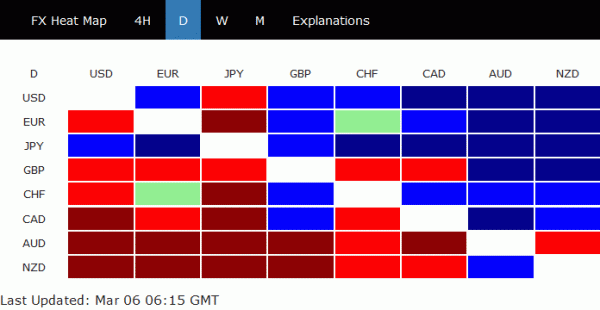
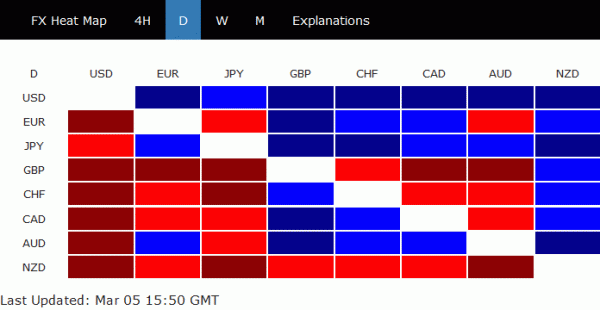

UK Hammond: The governor will not vote for no-deal Brexit
More from Chancellor of the Exchequer Philip Hammond. He told BBC radio that “The government is very clear where the will of parliament is on this. Parliament will vote not to leave the European Union without a deal,” and he had “a high degree of confidence about that.”
At the same time, he also warned that voting against Prime Minister Theresa May’s deal, the UK “will then be in unknown territory where a consensus will have to be forged across the House of Commons and that will inevitably mean compromises being made.”